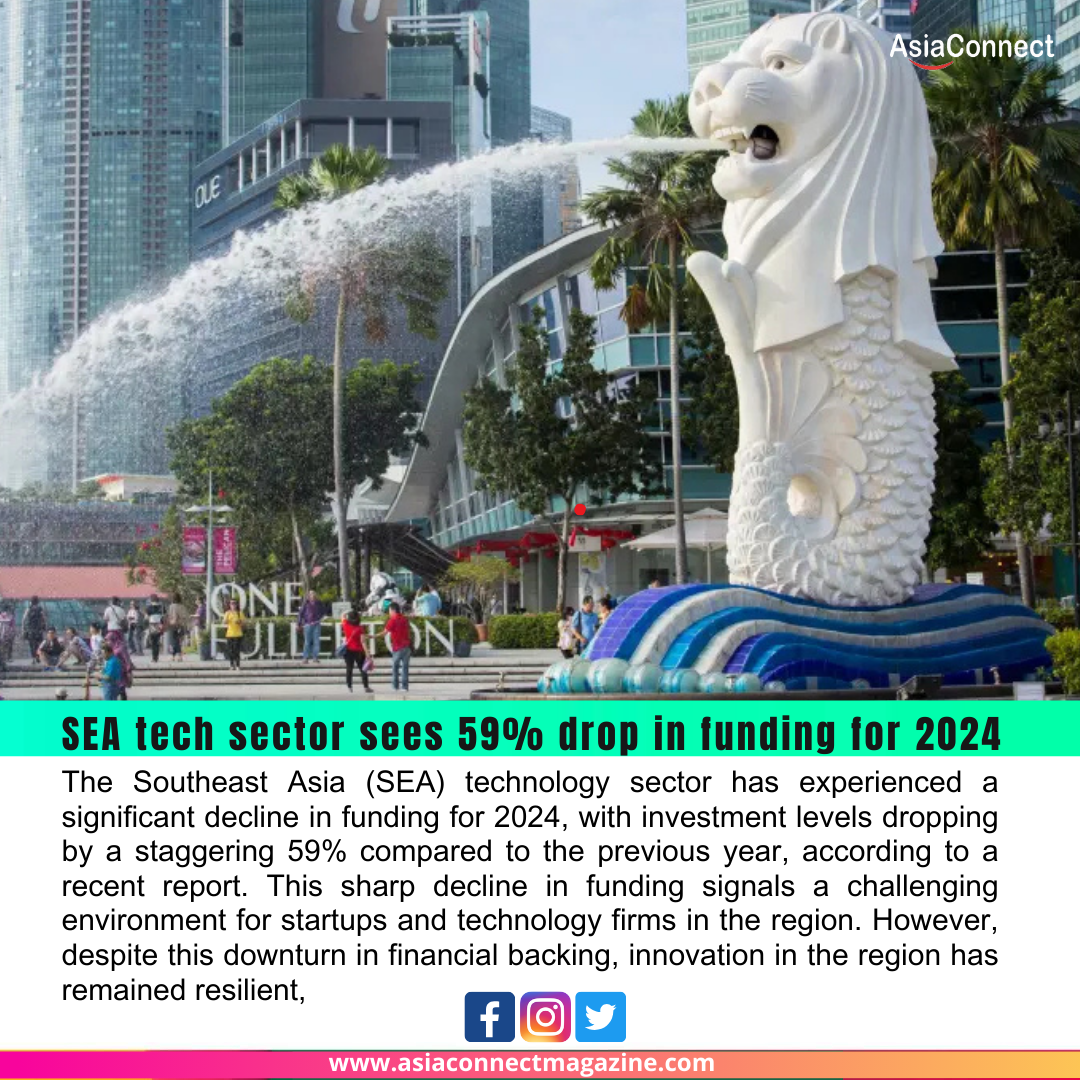SEA Tech Sector Faces 59% Drop in Funding for 2024, Yet Innovation Remains Strong
The Southeast Asia (SEA) technology sector has experienced a significant decline in funding for 2024, with investment levels dropping by a staggering 59% compared to the previous year, according to a recent report. This sharp decline in funding signals a challenging environment for startups and technology firms in the region. However, despite this downturn in financial backing, innovation in the region has remained resilient, with several companies continuing to push boundaries in areas such as fintech, artificial intelligence (AI), and e-commerce.
Funding Decline: A Reflection of Global Economic Trends
The 59% drop in funding for SEA tech firms reflects a broader global trend of cautious investment amidst economic uncertainties. Rising interest rates, inflationary pressures, and the potential risks of a global recession have led to investors tightening their purse strings. As a result, venture capital (VC) and private equity (PE) firms have become more selective, focusing on more mature, stable companies with proven business models, while reducing investments in early-stage ventures and high-risk projects.
Moreover, the post-pandemic recovery period has brought about a reevaluation of tech valuations, with several companies facing downward adjustments. Over the past few years, the SEA tech sector had been thriving, benefiting from the surge in digital adoption driven by the COVID-19 pandemic. However, as the world adapts to a “new normal” and digital transformation stabilizes, investors have adopted a more cautious approach to avoid overextending capital in uncertain times.
Innovation Continues to Flourish
Despite the financial slowdown, innovation in the SEA tech ecosystem has shown remarkable resilience. Many startups and established companies in the region have continued to push forward with new products, services, and business models, driven by an entrepreneurial spirit and the desire to meet the evolving needs of the digital consumer.
In particular, Southeast Asia’s fintech sector has maintained strong momentum. With growing demand for digital banking, payment solutions, and cryptocurrency adoption, companies are continuing to innovate in areas such as blockchain technology and AI-powered financial services. Fintech firms are focusing on improving user experience, reducing costs, and expanding their reach to underserved populations, such as the unbanked in rural and remote areas.
The artificial intelligence (AI) sector in Southeast Asia has also seen sustained innovation. Companies across the region are increasingly leveraging AI to enhance their offerings, from improving operational efficiencies to providing personalized customer experiences. Whether through AI-based chatbots, predictive analytics, or autonomous solutions, AI continues to play a key role in transforming industries ranging from healthcare to logistics.
E-commerce, another key pillar of SEA’s digital economy, remains a hotspot for innovation. While the sector may face challenges due to market saturation, companies are adapting by integrating new technologies, such as augmented reality (AR) and machine learning, to create more engaging shopping experiences. Additionally, many e-commerce platforms are enhancing their supply chains and payment systems to offer faster and more seamless services to consumers.
The Path Forward: Adaptation and Resilience
As the SEA tech sector navigates the funding downturn, companies are adapting by focusing on efficiency, profitability, and long-term sustainability. Many startups are shifting from growth-at-all-costs strategies to more balanced approaches that prioritize profitability and operational excellence. Cost optimization, strategic partnerships, and mergers and acquisitions are becoming key strategies to weather the financial storm.
Additionally, governments and regulatory bodies in Southeast Asia have continued to support the tech ecosystem by introducing favorable policies, promoting digital literacy, and investing in infrastructure. These efforts provide a strong foundation for innovation to continue thriving despite funding challenges.
Conclusion
While the 59% drop in funding for the SEA tech sector in 2024 presents challenges, it also highlights a period of transformation and adaptation. As the region’s tech companies adjust to the current economic climate, their focus on innovation, cost-efficiency, and sustainability will likely determine their success in the years ahead. The resilience of the SEA tech sector in continuing to innovate, even in the face of funding declines, showcases the region’s potential as a global hub for technological advancements and entrepreneurial growth.





